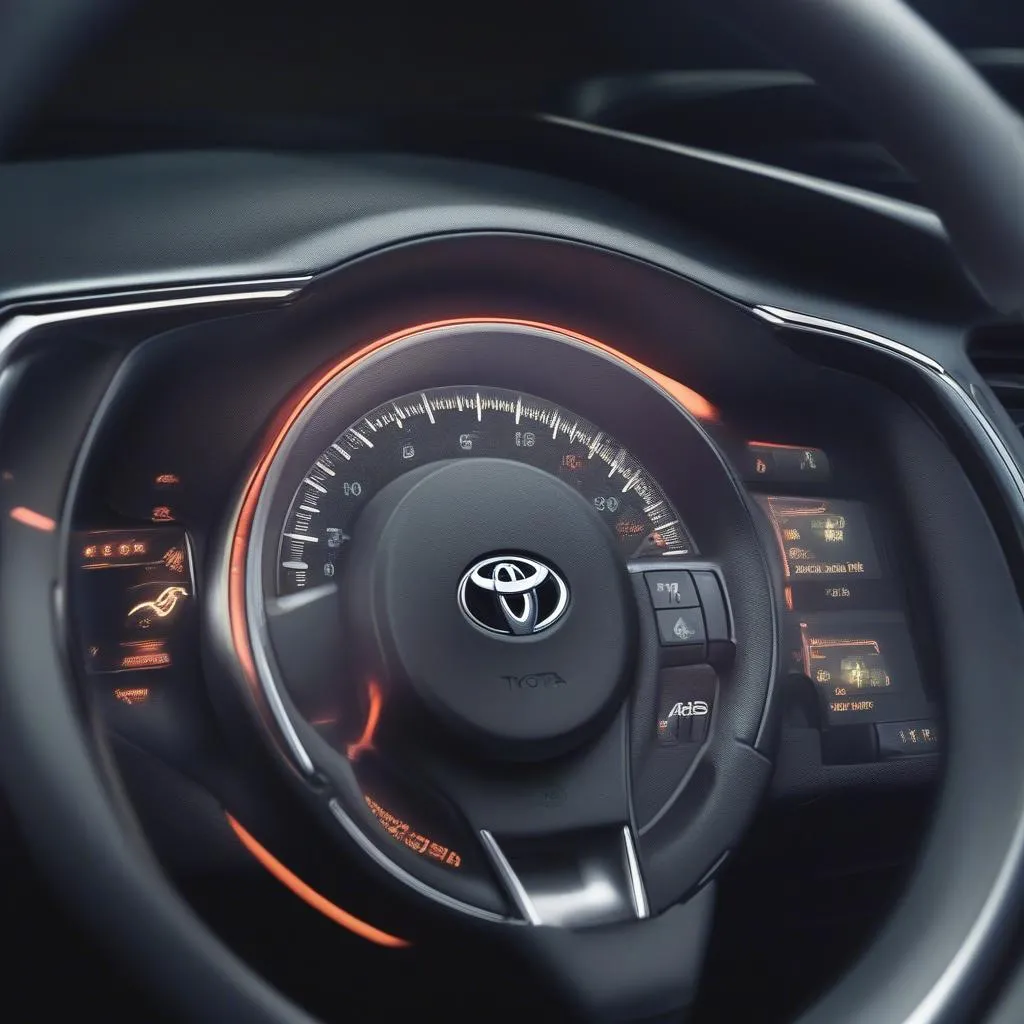Have you ever been driving down the road, enjoying your favorite playlist, when suddenly a yellow light pops up on your dashboard? It’s a dreaded sight – the ABS light. The first thought that pops into your mind might be, “What does this even mean? Is my car going to explode?!” Fear not, fellow driver! It’s not always a cause for panic. In this article, we’ll break down the meaning of the Toyota ABS light and guide you through the troubleshooting steps to get back on the road safely.
Understanding the Toyota ABS Light:
The ABS (Anti-lock Braking System) is a crucial safety feature in your Toyota. When you slam on your brakes, the ABS system prevents your wheels from locking up, allowing you to maintain control of your vehicle. However, when the ABS light illuminates, it signals a potential issue within the system, preventing the ABS from operating properly.
A Closer Look at the Toyota ABS Light:
The Toyota ABS light can be triggered by a multitude of factors, including:
1. Faulty Sensors: These sensors, typically located on each wheel, monitor the speed of the wheel rotation. If any sensor malfunctions, the ABS system might interpret it as a locked wheel and activate the light.
2. Wiring Issues: Damaged or corroded wiring can also disrupt the communication between the ABS sensors and the control module, leading to the warning light.
3. Hydraulic System Problems: Problems in the hydraulic system that regulates brake fluid pressure can affect the ABS operation and trigger the light.
4. Faulty ABS Control Module: This central unit, which monitors and controls the ABS system, can malfunction, leading to the ABS light illuminating.
5. Low Brake Fluid: Believe it or not, low brake fluid can also cause the ABS light to come on. Since the ABS system shares fluid with the traditional brake system, low fluid levels could impact the overall hydraulic pressure, ultimately affecting the ABS system’s ability to function correctly.
Troubleshooting Your Toyota ABS Light:
The following steps can help you identify the source of the problem and potentially resolve it:
1. Check Your Brake Fluid Levels:
First things first, pop open your hood and locate the brake fluid reservoir. The level should be within the “Full” and “Min” markings. If it’s low, top it up with the correct brake fluid type.
2. Visual Inspection:
Take a peek under your Toyota, especially around the wheel areas where the ABS sensors are located. Check for any visible damage to the wiring, loose connectors, or any signs of corrosion.
3. Scan for Codes:
The best way to pinpoint the problem is by using a diagnostic scan tool. The tool will read the ABS system’s codes, which will help you understand the specific fault causing the ABS light to illuminate.
Here’s where you can find a reliable tool:
- Diag XCar Website: Our website provides a comprehensive list of scan tools specifically designed for European cars, including those compatible with Toyota models. https://diagxcar.com/best-obd-scanner-for-toyota/
4. Consult a Mechanic:
If the issue persists or you’re uncomfortable troubleshooting the ABS system yourself, it’s best to seek professional help. A qualified mechanic can diagnose the problem and provide a solution, ensuring your safety on the road.
What Happens If You Ignore the Toyota ABS Light?
Ignoring the ABS light can be a dangerous gamble. While your car might still brake, you’ll lose the advantage of the ABS system, potentially leading to a loss of control during an emergency braking situation.
Think about it this way: You wouldn’t ignore a flashing engine light, would you? The ABS light serves as a warning, and it’s crucial to address the issue to ensure the safety of yourself and other drivers.
Frequently Asked Questions (FAQs):
1. Will the ABS light always come on when I have low brake fluid?
No, not always. The ABS light is often associated with issues within the ABS system, and low brake fluid might only sometimes trigger it.
2. Is it safe to drive with the ABS light on?
While you can still brake, driving with the ABS light on is not recommended. It means the ABS system is not functioning correctly, increasing the risk of losing control during an emergency braking situation.
3. Can I reset the ABS light myself?
Some Toyota models allow you to reset the ABS light by following a specific procedure involving the brake pedal. However, it’s essential to note that resetting the light without addressing the underlying issue is merely a temporary fix.
4. What’s the average cost to repair a Toyota ABS light issue?
The cost of repairing an ABS light problem varies depending on the severity of the issue and the necessary repairs. It can range from a simple fix (like replacing a faulty sensor) to a more complex problem (like repairing damaged wiring or replacing the control module).
Conclusion:
A lit ABS light on your Toyota dashboard isn’t something to be ignored. While it might seem like a minor inconvenience, it’s a signal that the ABS system is not functioning as it should. Take the necessary steps to diagnose and address the issue to ensure the safety of yourself and other drivers.
Do you have any other questions about your Toyota’s ABS light? Share them in the comments below!
 Toyota ABS light warning
Toyota ABS light warning
 Toyota ABS sensor inspection
Toyota ABS sensor inspection
 Scan tool for Toyota ABS diagnosis
Scan tool for Toyota ABS diagnosis
Need help with your Toyota’s ABS system or any other vehicle diagnostics? We’re here to help! Contact us via Whatsapp: +84767531508 for 24/7 support from our expert technicians.